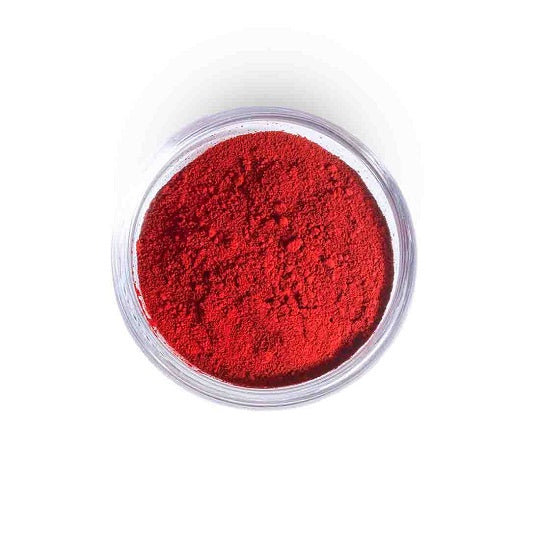Superfatting in Soap Making - A Comprehensive Guide
Superfatting soap-making technique adds a touch of luxury by leaving behind beneficial oils in the soap. These soaps pamper your skin while cleaning, leaving it feeling soft, conditioned, and moisturised. It also increases the lather in the soap.

These soaps are generally made from body butters, essential oils, and natural oils. Let's see the science, methods, and benefits of crafting superfatting soap.
Understanding Superfatting in Soap
In the superfatting technique, more fatty oils are used compared to the lye in order to leave the oil in the soap that has not turned during the process. It is important to calculate the percentage of superfat as it needs to be around 5% and the rest 95% would be the other ingredients. One can easily calculate the percentage through an online superfat calculator.
Benefits of Superfatting in Soap
Supperfatting is a soap technique that offers a range of benefits to the skin. Let’s explore how this technique helps the skin and the soap-making process.
1.MoisturizingSuperfattining adds excess oils that does not turn into soap and remain in to soap bar. It provides a moisturising effect when lathered up and rinsed.

Unsaponafied oils act as a barrier to the cleaning power of the soap creating superfatted soap gentler on the skin. Superfatted soap are highly recommended for sensitive and dry skin, especially for people suffering from eczema and psoriasis.
3.ConditioningThis process adds a conditioning element to the soap. The leftover oils can help replenish the skin’s natural oil creating a protective barrier, leaving the skin feeling soft and smooth.

In most cases, superfatting leads to richer and creamier lather. This happens due to the way excess oil interacts with water.
5.Increased StabilityDue to the slightly higher oil content in superfatted soap, it cures a little slower. However, the extra oil also prevents the soap from crumbling and cracking. It is also essential to note that very high superfat levels can make the soap soft.
Methods of Superfatting
Whether you prefer the cold process or the faster results of the hot process, both methods offer ways to add superfatting to the soap.

This method allows for customisation and superfatting process. It can be achieved in two ways one of them being reducing the lye concentration in the soap. This way it leaves some of the oils un-saponified. The other option is to increase the quantity of the fatty oils which will increase the moisturising and conditioning properties.
2.Hot ProcessIt offers quicker results compared to the cold process method. The hot process involves heating the oils and lye solution while reducing the quantity of the lye.
DIY Homemade Superfatting Soap
Superfatting process is simple and lets you customise the oils of your choice, it adds additional moisturisation to the soap.

- Virgin Coconut Oil - 3 cups
- Virgin Olive Oil - ⅔ cup
- Sweet Almond Oil - ⅔ cup
- Water (cold) - ¾ cup
- Lye (Sodium Hydroxide)- ⅕ cup
Directions to Use
Step 1: Protect yourself and wear gloves and mask.
Step 2: Take a jar and fill it halfway with water. Take properly measured ⅕ cup of lye. With care slowly add the lye into the water and keep stirring. Take precautions while stirring to avoid fumes.
Step 3: Take another jar and add 3 cups of virgin coconut oil, ⅔ cup of virgin olive essential oil, and ⅔ cup of sweet almond oil. Place the jar in the microwave or use a saucepan to heat the oils for about a minute.
Step 4: Make sure to check the temperature of the oils and to keep it between 50 degrees - 60 degrees Fahrenheit.
Step 5: Let the lye solution cool down to around 50 degrees - 40 degrees. It is essential to check the temperature to make sure it is not too hot or too cold, which will make the soap texture coarse.
Step 6:Take a bowl and pour oils into it along with lye. But, while pouring lye, keep stirring the mix to combine everything together.
Step 7:Stir for about 5 minutes. Let the solution rest for 5 minutes and after that continue stirring again. The consistency of the soap will gradually thicken.
Step 8: Moving to the final steps, pour the soap mixture into the silicone mold and wrap it with plastic wrap.
Step 9:Place the mold in a dark place after wrapping it with a towel to retain the heat. It will kick off the saponification process.
Step 10:After a day check up on the soap and cut it into bar-size pieces and let them cure again for about 3 to 4 weeks.
Mistakes to Avoid
There are a few concerns one should look out for while dealing with the superfatting soap procedure. The more free oils the superfatting process contains the risk of spoilage are higher. It happens because of Dreaded Orange Spots (DOS). As the name suggests are orange spots of free oil that have gone bad resulting in spoilage of the soap. Always pay attention to lye calculators to get the accurate quantity of the lye and reduce the risk of the coarse texture of the soap.
Conclusion
Superfatting a soap is a simple process packed with lots of benefits to the skin and the process of soap making. These soaps are suitable for all kinds of skin, especially dry and sensitive. Due to the increase in fatty oils which increases the moisturisation in the soap. It offers gentle cleansing while calming the irritated skin. Superfatting soaps are perfect for handmade soaps and gifts.
Frequently Asked Questions:
Q1.Can I choose butter and oils to form my superfat?Ans. Yes, you can use various types of butters such as shea butter and cocoa butter. For oils, you can use castor oil, almond oil, coconut oil, olive oil, and grapeseed oil.
Q2.Will superfatting make my soap bar soft?Ans. Adding too much fatty oils will make your soap bar soft. It is essential to calculate the supperfatting in the soap.
Q3.What percentage of soap is superfat?Ans. Usually, 5% of soap is superfat but you can increase and decrease the levels according to your preferences.
Q4.Can a soap be Superfatted with a specific butter or oil?Ans. Only if you incorporate 1 fatty oil into the soap then yes.
Q5.What happens if a soap isn't Superfatted?Ans. It will be like a regular soap which offers cleaning, less lather and is slightly dry in nature compared to superfatting soap.
You May Also Like:
Buy Products
-
 Matte American Red Oxide Pigment Powder
Matte American Red Oxide Pigment Powder -
 Shea Butter
Shea Butter -
 Sweet Almond Oil
Sweet Almond Oil -
 Virgin Coconut Oil
Virgin Coconut Oil -
 Virgin Olive Oil
Virgin Olive Oil
Related Articles
Disclaimer :- This article is intended for informational and educational purposes only and should not be considered a substitute for professional medical advice. For specific health concerns or treatment, please consult your personal physician. The article's editor, writer, and VedaOils organization do not assume any responsibility for any health outcomes resulting from the information provided. Readers are strongly encouraged to seek advice from their physician before acting on any recommendations made in these articles.















 Sign in
Sign in Register now
Register now My Reward Points
My Reward Points









